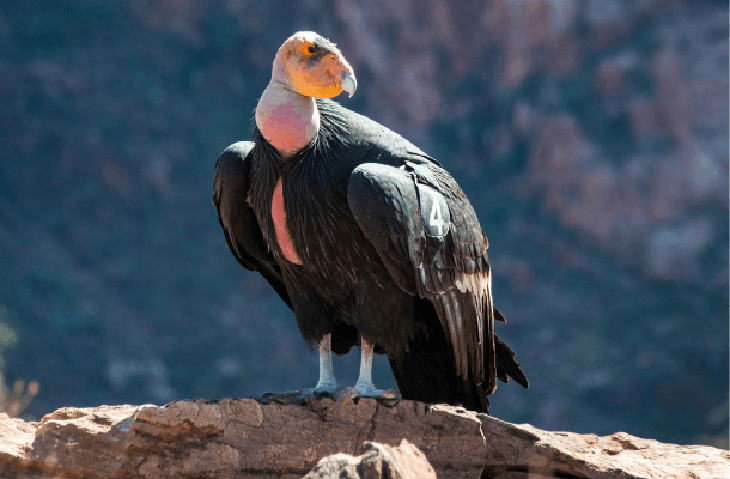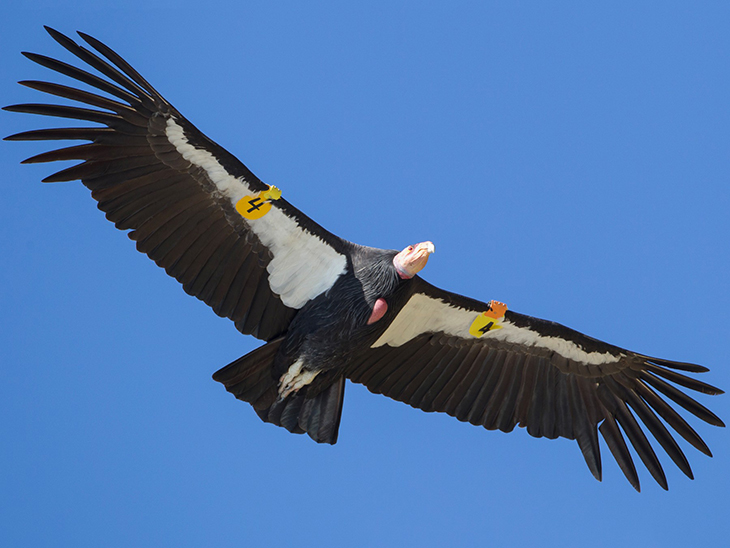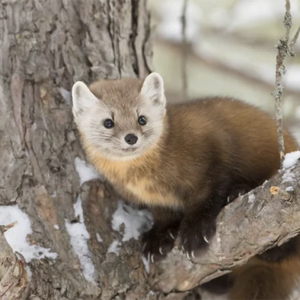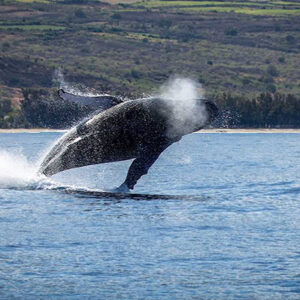
Condors have been hunted for so long that many of them have disappeared. These magical birds hold so much meaning and value for some of the tribes. That’s why animal activists and experts have come together to save this creature.
Years back, if you find yourself traveling to the top of a mountain in Zion National Park, in Utah, you may find yourself transported to Illescas Peninsula, in Piura, Peru. That’s because this land is home to the California Condor. You may also notice that attached to its wings is a plastic plate with a number written on its wing.
This extraordinary experience is exhilarating because the condor belongs to a group of very rare species. You may nearly have missed this beauty because the bird was actually “miraculously” saved from the dangers of extinction.
By the late 1970s, it had become apparent that the California Condor was on its way to being gone for good because of human activities such as poisoning, hunting, and habitat destruction. They had an annual censuses then and they saw a significant drop in its numbers. Hence, they huddled their heads together and talked about what needed to be done. Many had claimed how extinction was inevitable. Out of respect to the species themselves, they thought it was better to let it be and let the bird disappear quietly, as was destined.
Then, there were those who remained headstrong. They believed that these condors could still be saved, but in order to do so, they had to act swiftly and radically. There were only 22 left in the wild, flying in the blue skies of North America. There were also those who were held in captivity. It was then that the U.S. Fish and Wildlife Service (USFWS) decided to act immediately. They had the technical support of scientists, which was led by the San Diego Zoo. They opted to capture all that were left. They left none to chance because it was all or nothing for them back then.
The Illescas Peninsula: Beautiful and Surreal
In the 1980s, the Illescas peninsula was extremely inaccessible. This was the only known site on the coast where the Andean Condor nested and loved. This land was extremely mysterious and appealing, and because many people could only wonder what was there, many only dreamed of visiting it. The peninsula was at the point of the northern coast where the Humboldt current flows away from the mainland towards the Galapagos Islands. There were no roads and towns near it. The nearest city was Chiclayo, but even then, the commute would have been unbelievably difficult. Once there, however, you’ll be faced with a stretch of 200 kilometers of a totally pristine beach. In fact, this is considered the longest in Peru. Access to the peninsula may be hard, but it’s not impossible. You just need to be well-equipped, and which is something difficult for many to achieve.
There were also feral populations of donkeys and goats, and they had intermingled with animals of unknown origin. Then there were the mountains that rose at the edge of a sea with colonies of sea lions and whale bones that had been weathered by time. In the middle of its desert are attractive animals, such as the tiny Sechura foxes and coral snakes. Life was thriving there and a biologist would have the time of his life just studying the environment they’ve managed to create for themselves.
The Bold Plan to Help Save the California Condor

Peru has been the inspiration for the plan. With the California Condor, which is the largest North American bird, they have a religious and magical significance for the ancestral and modern cultures that once lived there. So respected were they that the thought of catching them seemed too risky and bold to do.
The plan of the team was to reproduce the California Condor while they were held in captivity. They chose this move to give them a chance to make correction to the area that had caused the decline. Once that was done, they would be reintroduced into the wild in order for them to repopulate in own homes and in familiar territory. At that time, no one knew much about them. It was an experience that people never had. The biologists involved were going in blind and were risking their necks just to have the dream become a reality. What helped was that they had high hopes and a budget big enough to cover what was needed. The captive breeding techniques had already been put into place. What was more challenging for them was reintroducing birds to the wild. They never handled a bird of that size and a wide flight range.
If they were successful, would the condors survive in freedom after being in captive for some time? Would their efforts and hard work be futile? They could only hope for the best.
With the experimentation of the novel techniques, this endeavor entailed a lot of effort because of the limited number of California Condors. They couldn’t afford such high risks. They decided to experiment with a substitute first, and luckily, they came up with one: the Andean Condor.
These were the closest and most similar relative to the California Condor. Therefore, they needed its help to foresee what was needed. The plan also required a safe place so that they carried out its requirements. They needed an area that was safe for wild condors and free from human interference. This was when the Illescas Peninsula in Peru came into play because it was perfect place.
The existing captive population of Andean Condors found in the U.S. is probably of Peruvian origin. They were handpicked for the experiment as were their chicks at the focal point. The chicks were born and cared while in captivity at the San Diego Zoo. The feeding was done with puppets to recreate the way their parents would feed them. These puppets imitated the caring sounds as well. The babies were totally isolated so that they would not get imprinted by humans living around.
This required a lot of patience from the technicians overseeing the experiment because success was only achievable if they had love and dedication during the entire process.
The Field Test of the Plan
The group worked with a lot of support from both governments. The Andean condor chicks, who were already fledged and ready to fly, were brought to Peru back in the early part of the 1980. They were taken to the Illescas peninsula with utmost care because what they had with them was an extremely important cargo. Effort had to be given and they made sure to fly under the radar so that news of the plan won’t reach the public. The birds were released in areas that may once have been nests and once done, they were monitored constantly and consistently.
Several wild Illescas condors were also caught and tagged. This was done to monitor the local population and to learn from their social life. This was vital information, which is why each Andean Condor, both imported and native, carried an individual identification tag on its wing. This had a transmitter of location data.
The tags also contained a small solar panel that powered it. With all the requirements, everything needed to be very small and light, in the 80s, the task was near impossible. Hence, the beginnings of a satellite tracking technique that we widely use today was conceived. The condors were followed on a permanent basis to keep the scientists updated on their movements and to see if they had survived the harsh elements of nature.
The program ran round the clock for months at a time. Holidays were not in existence for them. They wandered the desert and mountains with a telescope in special dune buggies. Other times, the researchers witnessed wild adult condors coming in to feed the chicks that weren’t even theirs. They found how the entire cared for the young, which was something not common to many animals.
Applying Lessons Learned in Peru to California
Basically, techniques learned and developed in Illescas were then utilized and applied to save the California Condor. Credit needed to be given to the Andean Condor because this was where the scientists learned and practiced the proper way to care for the chicks. They also discovered the times and dependency factors, the ideal gear to be used, and most of all, how these majestic creatures are actually very social.
Because so much has happened in the origin, the place was declared as the “Illescas National Reserve.” People realized the pertinence of this grand place and is finally being categorized. The animals living there are getting the protection needed for its own biological and geological attributes. So, where exactly is this? Illescas, is in one of the westernmost continental points of Peru, with the final remnant to the north of the old coastal Cordillera mountain range.
These conditions that were set in place had created the perfect environment where species unique to Illescas flourished, thrived, and lived with its soft blend of warm and cold environments, with mangroves, fog Loma vegetation, penguins, dozens of migratory bird species, and a good number of endangered Andean Condor population. Thanks must be given to SERNANP (which is the Peruvian Park Service), the Piura authorities, and the Sechura desert peoples.
Ten years after the Illescas experience, the California Condors were finally reintroduced into the wild. They were placed in various areas within the United States. The whole experiment paid off because as of today, scientists have noticed that there is a growing population of them flying freely. In their count, there were around 350 of them. These wonderful condors had been saved and were spared from becoming extinct. Sadly, not every creature enjoyed the same fate. Some succumbed to loss such as massive Ivory-billed Woodpecker.
Because of the wonderful Andean Condor and the future Illescas National Reserve, the California Condor lives and thrives to this very day. Without the efforts of the dedicated scientists, where would they be or would the world know them at all?
What are your thoughts? Please comment below and share this news!
True Activist / Report a typo


